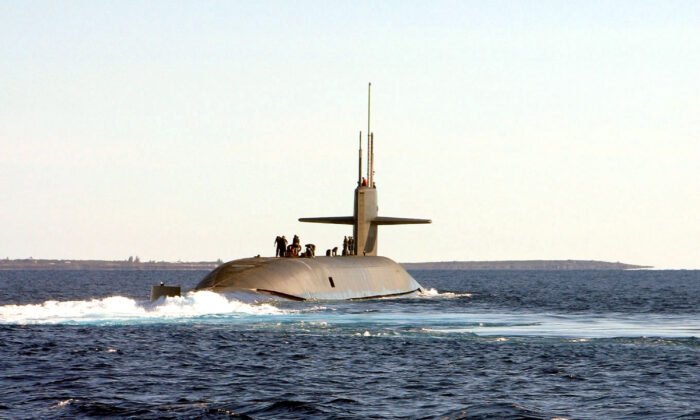Analysis Reveals Australia’s Defence Budget Increased by Only 0.8 Percent in Real Terms Over the Past 10 Years
Despite being touted by the government as a significant investment, Australia’s defence budget falls short in real terms, despite being on track to meet US expectations.
A recent report indicates that Australia’s defence spending has remained stagnant over the past decade, with new funding commitments unlikely to have an immediate impact. The federal government’s latest announcements pertaining to the defence budget highlighted an additional $50.3 billion in spending over the next 10 years, with an extra $10.6 billion to be invested over the forward estimates period. Furthermore, $1 billion of spending is set to be fast-tracked to expedite the acquisition of capabilities, bringing the total to $57.6 billion over the next decade. Defence Minister Richard Marles emphasized that this pledge contrasts with the previous Coalition government, which had cut $20 billion from the defence budget without public disclosure.
However, an analysis conducted by Strategic Analysis Australia (SAA) reveals that under both Labor and Coalition administrations, the actual buying power of funds has been eroded by inflation, resulting in a mere 0.8 percent increase in real terms. While the proportion of defence spending relative to GDP is expected to rise from 2.03 to 2.05 percent, it still falls short of the government’s National Defence Strategy (NDS) target of 2.4 percent by 2033/34.
The allocated funding is directed towards the Department of Defence, the Australian Signals Directorate, and the Australian Submarine Agency.

Despite acknowledging that, “over the next two decades, we face greater security uncertainty and complexity, globally,” the 2016 Defence White Paper made no funding provision for dealing with it, according to a report from Strategic Analysis Australia.
The 2016 Defence White Paper (DWP) projected funding for 10 years until 2025/26, a period extended by the Morrison government’s 2020 Defence Strategic Update (DSU) until 2029/30, with a comparable growth trajectory.
“Both Coalition and Labor administrations have essentially adhered to the funding outlined in these documents,” states the SAA report, titled “Defence 2025: Dollars and Decisions.” “Starting from the last Budget year prior to the 2016 DWP, the defence budget has increased from $31,151 million to $58,989 million in nominal terms, representing an 89.4 percent growth. Adjusting for inflation, reflecting the real growth, amounts to a significant 41.5 percent. Additionally, defence funding has risen from 1.88 to 2.05 percent of GDP.”
Nevertheless, over this period, governments have frequently reallocated funding to new initiatives. Strategic Analysis Australia notes, “While changing priorities are within the government’s purview, many of these necessitate Defence to finance the new initiatives using existing resources, yet the sacrifices made to fund these endeavors are seldom disclosed.”
Other additional ADF priorities include providing military support to Ukraine and implementing efficiency dividends. The 2023/24 Budget allocated $924 million for Pacific engagement, while the 2024/25 projections featured $972.8 million reserved for workforce retention initiatives.

Australia’s Minister of Defence Richard Marles (C) and Minister of Defence Industry and Capability Delivery Pat Conroy (R) announce the accelerated delivery of Australia’s first High Mobility Artillery Rocket System (HIMARS) at the Australian International Airshow in Avalon on March 24, 2025. The country’s acquisition of the HIMARS system was accelerated after a 2023 Defence Strategic Review. Photo by WILLIAM WEST/AFP via Getty Images
One notable initiative over the past decade was the REDSPICE cyber program introduced in the previous Coalition government’s final Budget in March 2023. This entailed transferring nearly $1 billion annually from the Department of Defence to the Australian Signals Directorate to enhance cyber capabilities.
“While this may be a worthwhile allocation of funds, the consequence is $981.4 million in 2024/25 and $974.9 million in 2025/26 diverted to bolster cyber capabilities at the expense of acquiring or operating military assets. The cumulative impact of these alterations is quite significant.”
Inadequate Consideration for Inflation Effects
Aside from needing to achieve more with the budget allocated, the Defence Force, like the rest of Australia, has also been impacted by inflation without receiving adequate compensation for it. The 2016 White Paper was formulated under the premise that inflation would align with the Reserve Bank’s target range of 2 to 3 percent annually. However, inflation rates have substantially exceeded this range post-pandemic, diminishing the purchasing power of every dollar relegated to defence.
Strategic Analysis Australia elucidates on the impact of inflation on the defence budget (A$, 2019–20 real dollars), showcasing that the current year is facing a 7.5 percent funding shortfall due to inflation, resulting in a $3.8 billion annual deficit in purchasing power and a cumulative loss of $13.1 billion since 2019/20.
“These are significant figures, and Defence does not receive budgetary adjustments to counterbalance inflation. Even if inflation levels revert to historical averages, the erosion of purchasing power will persist,” notes Strategic Analysis Australia.
Despite the current government raising defence funding by $50.3 billion over the decade, a majority of the funds have been allocated towards addressing the funding gap caused by the cancelled Attack-class submarine program and the introduction of the nuclear-powered submarine enterprise [AUKUS], with only $1 billion earmarked for new capabilities. Moreover, the majority of these enhancements are scheduled for deployment in the distant future.
“In 2024/25, Defence was granted a mere $400 million in additional funds,” points out SAA. “This marked the sole new funding for that year since the 2016 DWP, resulting in a minute 0.7 percent increase.”
A decade of heightened anticipation from the government, compounded by inflation and the expenditures tied to AUKUS, has illustrated that the new funding is inadequate, necessitating sacrifices. Over the next decade, a total of $72.8 billion in previously planned projects have been either cancelled or postponed.
“Little has altered since 2016,” concludes the report. “Not until we reach 2027/28 (corresponding to the latter phase of the subsequent administration) do we notice any substantial deviations between the old and new strategies. It is during this phase that the $3.8 billion (currently reduced to $3.6 billion) in cuts take effect. Currently, we remain ensnared in a financial blueprint that originates from a bygone, divergent time.”





